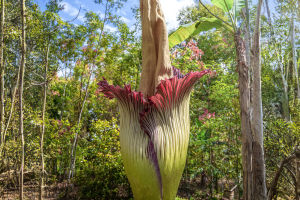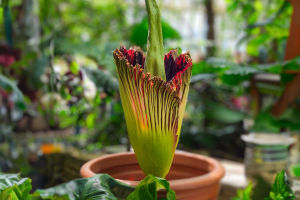Green Breath
Have you ever paused to think about how the air we breathe is made fresh and full of oxygen? The answer lies with plants, the green champions of our planet.
They produce oxygen through a fascinating natural process. Let's explore how plants create this life-giving gas and why it's so important for us.
Photosynthesis: The Heart of Oxygen Production
The key to oxygen production in plants is a process called photosynthesis. This word might sound complicated, but it's quite simple when broken down. Photosynthesis means "putting together with light." Plants use sunlight to turn carbon dioxide (a gas in the air) and water (from the soil) into food for themselves. Oxygen is released as a byproduct during this process.
Role of Chlorophyll: The Green Power
Plants are green because of a pigment called chlorophyll. This pigment is found in tiny parts of the plant cells called chloroplasts. Chlorophyll captures sunlight and uses its energy to drive the photosynthesis reaction. Without chlorophyll, plants couldn't absorb the light needed to make oxygen and food.
The Photosynthesis Equation Explained
The overall reaction in photosynthesis can be summarized like this: plants take in carbon dioxide (CO₂) from the air and water (H₂O) from the soil. Using sunlight, these are converted into glucose (a sugar that feeds the plant) and oxygen (O₂). The oxygen is then released into the air through tiny openings on leaves called stomata.
Stomata: Tiny Gates for Gas Exchange
Stomata are small pores mostly found on the underside of leaves. They act like tiny gates, opening and closing to allow gases to move in and out. Carbon dioxide enters through stomata, and oxygen exits back into the atmosphere. This gas exchange is crucial for both the plant's survival and for supplying oxygen to animals and humans.
Why Oxygen Release Matters to Us
The oxygen plants release is essential for most living creatures on Earth. Humans and animals breathe in oxygen to survive. It helps us turn the food we eat into energy. So, without plants producing oxygen, life as we know it would not exist. This connection shows how plants and animals depend on each other in a delicate balance.
Different Plants, Different Oxygen Rates
Not all plants produce oxygen at the same rate. Factors like plant size, leaf area, and environment affect how much oxygen they can generate. For example, large forests like the rainforest produce huge amounts of oxygen. Even small houseplants contribute to cleaning indoor air by releasing oxygen and absorbing carbon dioxide.
Oxygen Production Beyond Land Plants
Interestingly, underwater plants and algae also play a major role in oxygen production. Oceanic phytoplankton, tiny photosynthetic organisms in the sea, contribute roughly half of the world's oxygen. This highlights how important water ecosystems are to maintaining Earth's oxygen levels.
Human Impact and Plant Oxygen Production
Sadly, activities like deforestation and pollution affect plants' ability to produce oxygen. Cutting down trees reduces the number of plants available for photosynthesis. Pollution can damage leaves and interfere with photosynthesis. This is why protecting green spaces and planting more trees is vital for the health of our planet and ourselves.
Tips for Supporting Oxygen Production
You might wonder how you can help in this natural process. Simple steps like growing plants at home, supporting forest conservation, and reducing pollution help plants thrive and produce more oxygen. Even small efforts add up to make a difference for the air we breathe.
In conclusion, plants are not just a beautiful part of our world—they are the lifeblood of our atmosphere. Through the process of photosynthesis, they create the oxygen we rely on for survival, forming a vital connection between the Earth’s ecosystems. From towering trees to tiny underwater algae, every green leaf plays a role in keeping our air fresh and breathable.
However, human actions like deforestation and pollution are threatening this delicate balance. The good news? We can make a difference. By supporting plant life, conserving forests, and reducing our carbon footprint, we help protect the oxygen we depend on. So, the next time you take a deep breath, remember to thank the plants—and think about what you can do to help them thrive.
-
 Simple, Stylish Hair Looks!What’s The Secret To Sleek Strands And Bouncy Curls?! Try These Tools And See Magic Happen!
Simple, Stylish Hair Looks!What’s The Secret To Sleek Strands And Bouncy Curls?! Try These Tools And See Magic Happen! -
 Plants in DarknessDiscover fascinating plant species that thrive without light – how they survive in the dark!
Plants in DarknessDiscover fascinating plant species that thrive without light – how they survive in the dark! -
 The Stinky GiantHow Amorphophallus titanum, the corpse flower, attracts pollinators with its foul odor and giant blooms.
The Stinky GiantHow Amorphophallus titanum, the corpse flower, attracts pollinators with its foul odor and giant blooms.
Copyright © zogu 2021 - 2025. All Right Reserved.